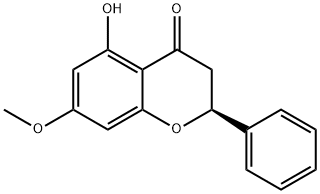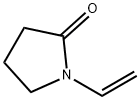PRODUCT Properties
| Melting point: | 100°C |
| Boiling point: | 494.9±45.0 °C(Predicted) |
| Density | 1.284±0.06 g/cm3(Predicted) |
| storage temp. | 2-8°C |
| solubility | DMF: 20 mg/ml; DMF:PBS (pH 7.2)(1:3): 0.25 mg/ml; DMSO: 12 mg/ml |
| form | A crystalline solid |
| pka | 7.40±0.40(Predicted) |
| color | White to yellow |
| InChI | InChI=1S/C16H14O4/c1-19-11-7-12(17)16-13(18)9-14(20-15(16)8-11)10-5-3-2-4-6-10/h2-8,14,17H,9H2,1H3/t14-/m0/s1 |
| InChIKey | ORJDDOBAOGKRJV-AWEZNQCLSA-N |
| SMILES | [C@H]1(C2=CC=CC=C2)OC2=CC(OC)=CC(O)=C2C(=O)C1 |
| LogP | 3.591 (est) |
Description and Uses
Pinostrobin is a flavonoid with diverse biological activities, including antioxidant, anti-inflammatory, and anticancer properties. It induces quinone reductase (QR) in murine hepatoma cells with a QR doubling concentration of 500 nM. Pinostrobin inhibits TNF-α and IL-1β production in RAW 264.7 macrophages (IC50s = 17.28 and 23.5 μM, respectively) and in LPS-stimulated rats (48.6 and 55% reduction, respectively). Pinostrobin also shows selective cytotoxicity for CCRF-CEM leukemia cells (IC50 = 10.2 μM) in a panel of eight cancer cell lines (IC50s = >30 μM).
Pinostrombin is a useful research chemical that can be used for chemical fingerprinting, isolating, and characterizing of polyphenol compounds. It can also be used as a potential compound for TMPRSS2 inhibition for Covid-19 therapy.
Safety
| Symbol(GHS) |  GHS07 |
| Signal word | Warning |
| Hazard statements | H315-H319-H335 |
| Precautionary statements | P261-P305+P351+P338 |
| Hazard Codes | Xi |
| Risk Statements | 36/37/38 |
| Safety Statements | 26-36 |
| WGK Germany | 3 |





